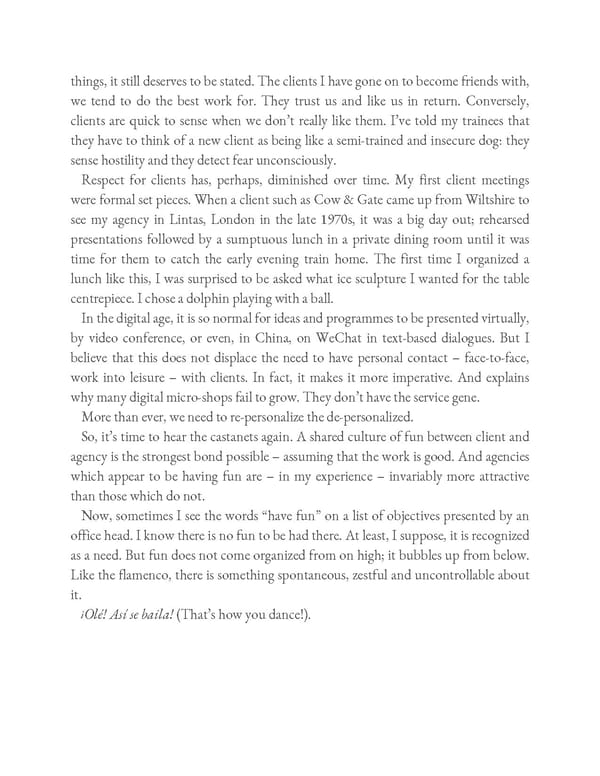things, it still deserves to be stated. The clients I have gone on to become friends with, we tend to do the best work for. They trust us and like us in return. Conversely, clients are quick to sense when we don’t really like them. I’ve told my trainees that they have to think of a new client as being like a semi-trained and insecure dog: they sense hostility and they detect fear unconsciously. Respect for clients has, perhaps, diminished over time. My first client meetings were formal set pieces. When a client such as Cow & Gate came up from Wiltshire to see my agency in Lintas, London in the late 1970s, it was a big day out; rehearsed presentations followed by a sumptuous lunch in a private dining room until it was time for them to catch the early evening train home. The first time I organized a lunch like this, I was surprised to be asked what ice sculpture I wanted for the table centrepiece. I chose a dolphin playing with a ball. In the digital age, it is so normal for ideas and programmes to be presented virtually, by video conference, or even, in China, on WeChat in text-based dialogues. But I believe that this does not displace the need to have personal contact – face-to-face, work into leisure – with clients. In fact, it makes it more imperative. And explains why many digital micro-shops fail to grow. They don’t have the service gene. More than ever, we need to re-personalize the de-personalized. So, it’s time to hear the castanets again. A shared culture of fun between client and agency is the strongest bond possible – assuming that the work is good. And agencies which appear to be having fun are – in my experience – invariably more attractive than those which do not. Now, sometimes I see the words “have fun” on a list of objectives presented by an office head. I know there is no fun to be had there. At least, I suppose, it is recognized as a need. But fun does not come organized from on high; it bubbles up from below. Like the flamenco, there is something spontaneous, zestful and uncontrollable about it. Olé! Así se baila! (That’s how you dance!).
 Ogilvy on Advertising in the Digital Age Page 464 Page 466
Ogilvy on Advertising in the Digital Age Page 464 Page 466